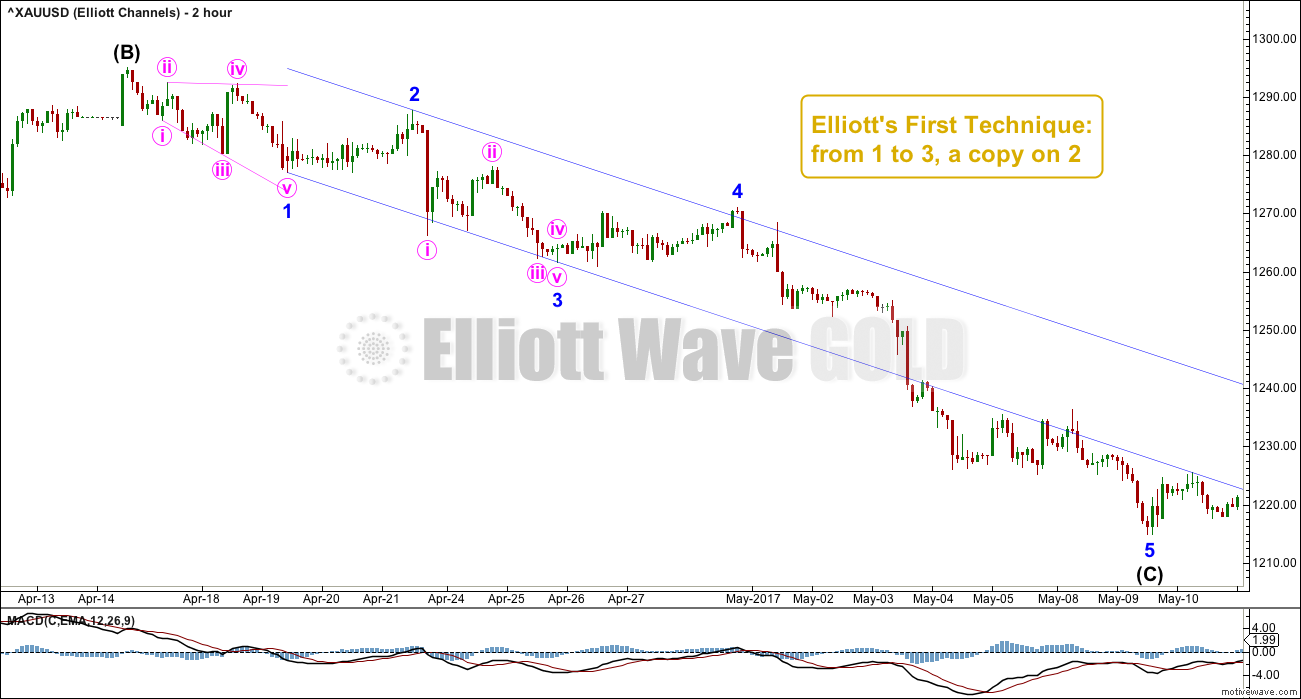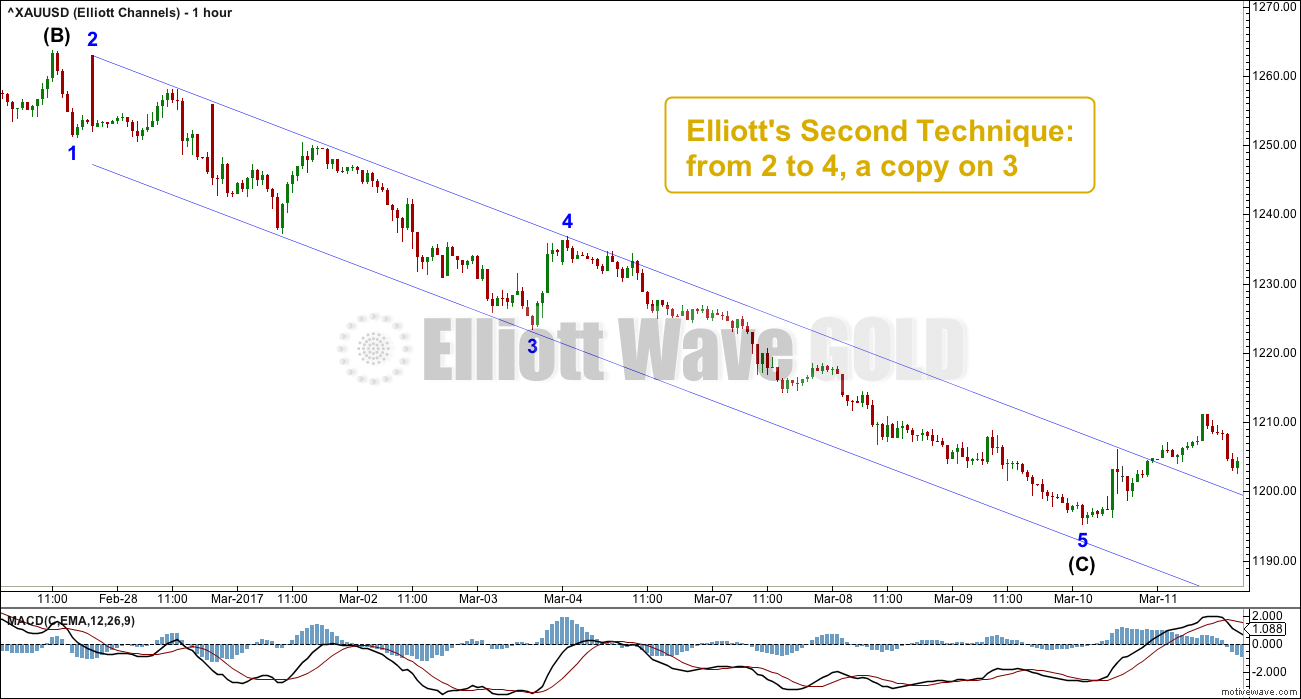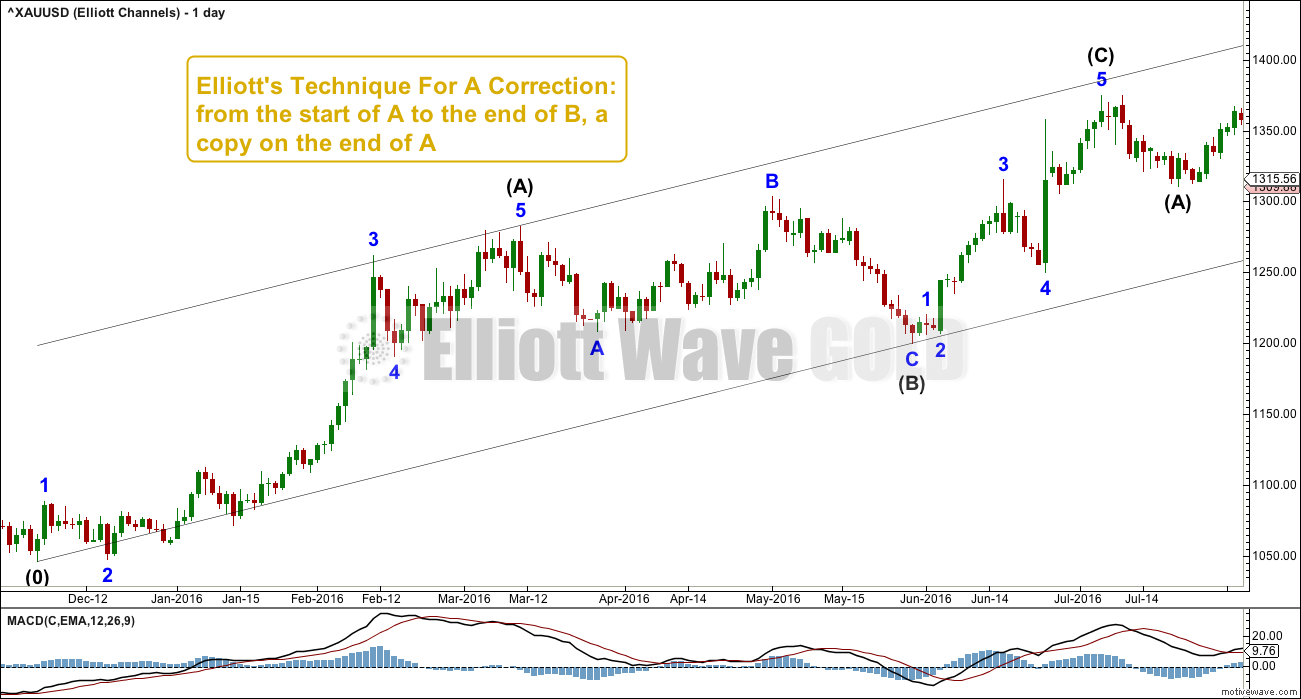3 Elliott Wave Techniques For Drawing Trend Channels
1. FIRST TECHNIQUE – IMPULSE
Once enough structure is complete to begin to draw an Elliott channel (about one third to halfway through a wave) use the first technique.
A trend channel drawn using this technique may show where the fourth wave may end. If the fourth wave is contained within the channel, then the fifth wave usually ends either midway or at the opposite edge of the channel. While most markets behave this way, commodities can be different. Commodities often exhibit swift and strong fifth waves which overshoot channels, as in this example.
When the channel is breached by subsequent movement in the opposite direction, it indicates the wave is over and a trend change may have occurred.
2. SECOND TECHNIQUE – IMPULSE
If the fourth wave is not contained within a channel drawn using the first technique, then redraw the channel using Elliott’s second technique.
This redrawn channel may show where the fifth wave may end: either mid way or about the side opposite the fourth wave.
When the channel is breached by subsequent movement in the opposite direction, it indicates the wave is over and a trend change may have occurred.
3. TECHNIQUE FOR A CORRECTION
If the movement is expected to be a correction, then it may be contained within a channel. Most corrections are contained within channels, but a few such as expanded flats are not.
The channel may show where wave C ends, either mid way or at the edge of the channel.
When the channel is breached by subsequent movement in the opposite direction, it indicates the wave is over and a trend change may have occurred.
Published @ 06:16 a.m. EST.



